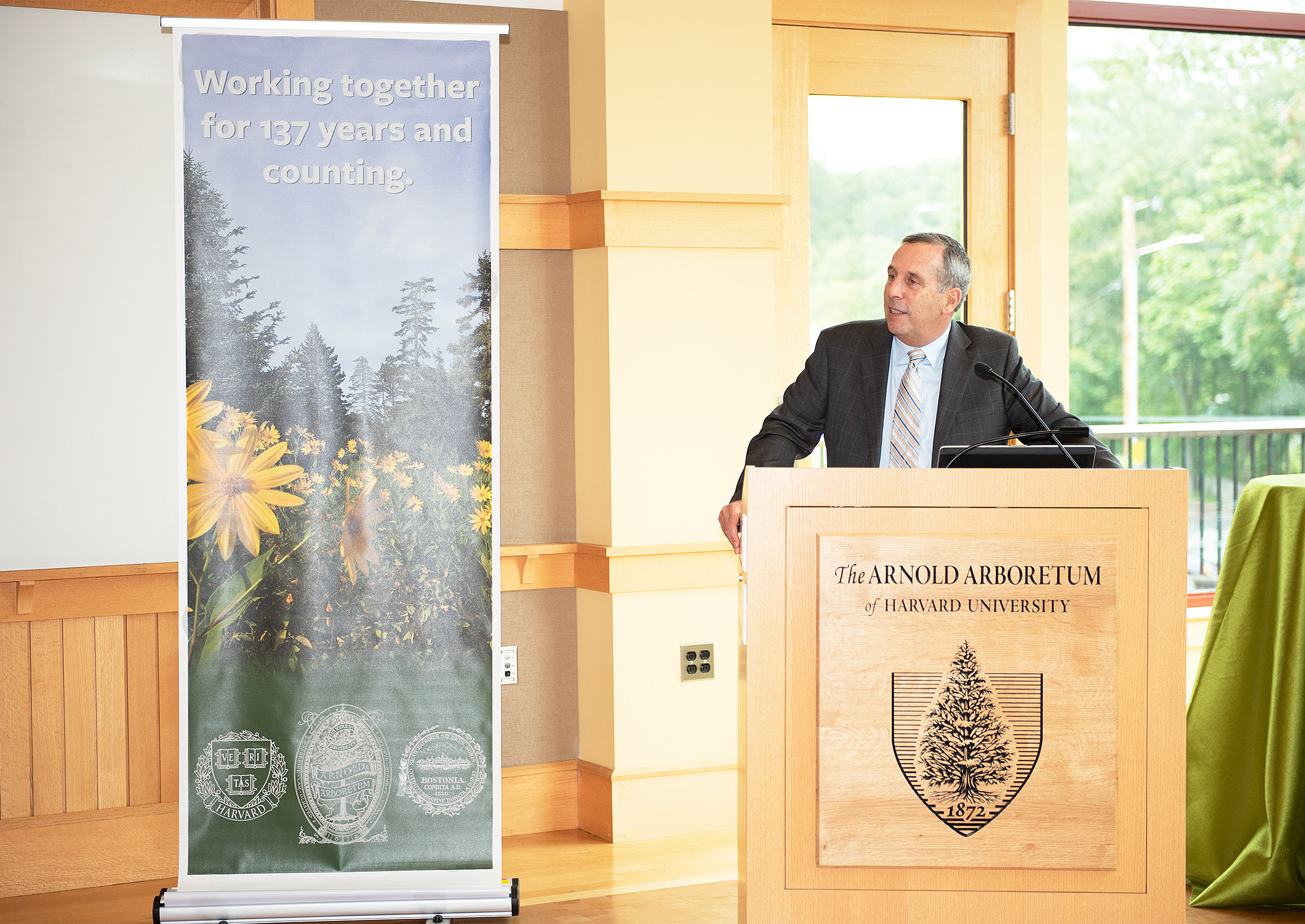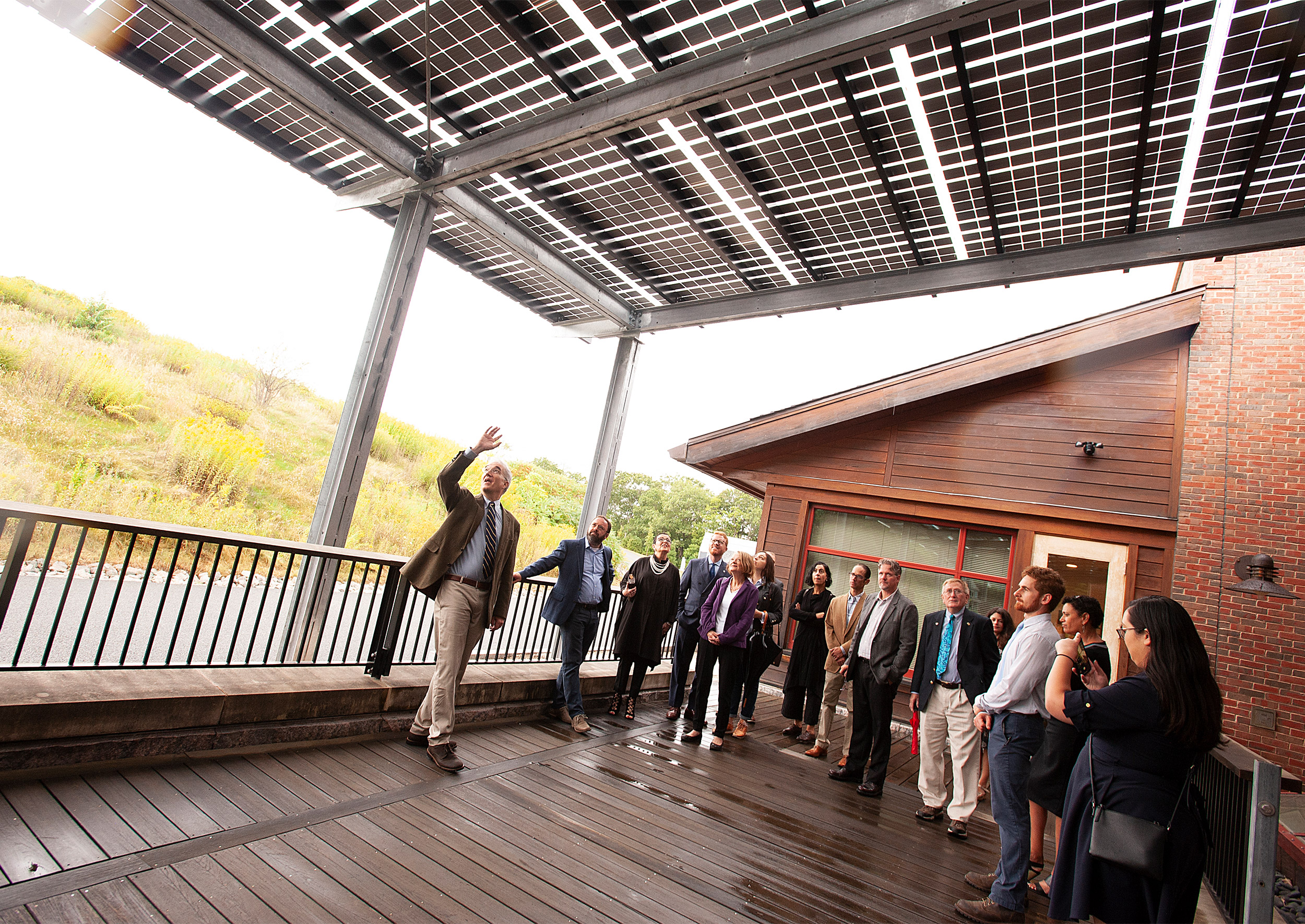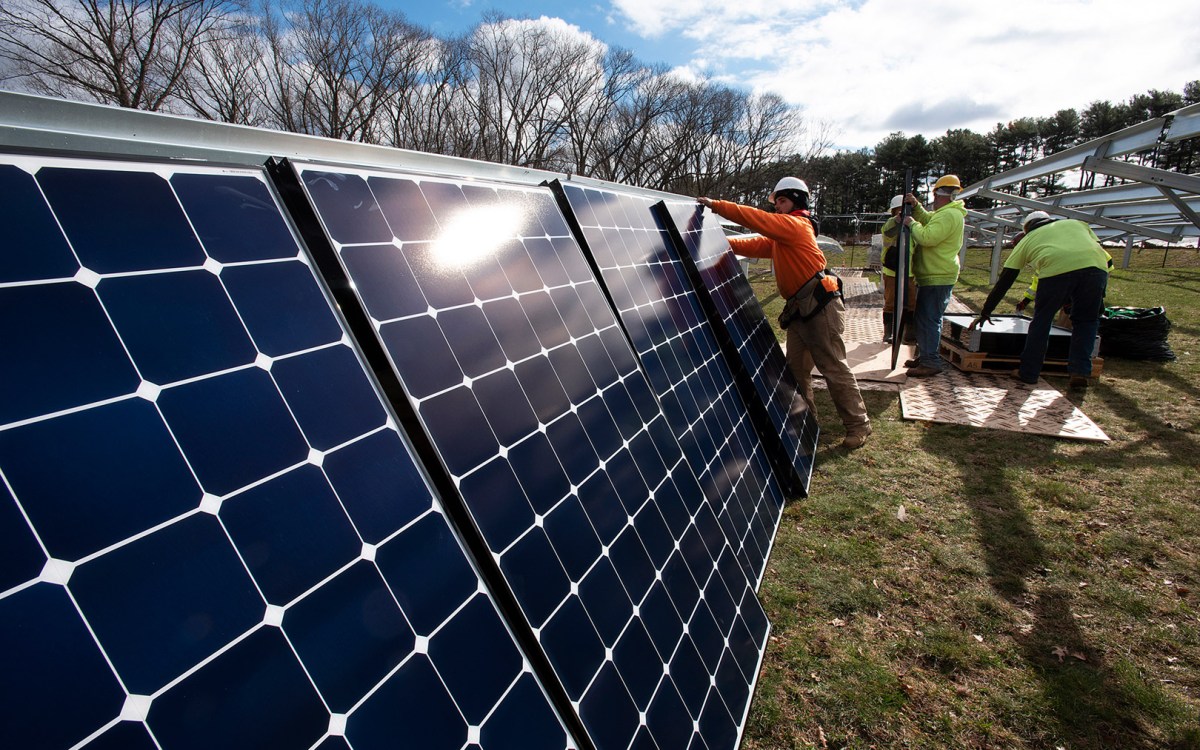
“Climate change is a challenge for all society and each and every one us bears a personal responsibility for what we can do individually,” said Harvard President Larry Bacow. “This project represents a tangible presentation of our commitment to do that.”
Photos by Jeffrey Blackwell/Harvard University
A flip of the switch to mitigate climate change
Weld Hill Solar Project feted by city, Harvard officials
With the flip of a switch, the Arnold Arboretum of Harvard University and the city of Boston illuminated a new chapter in their 137-year partnership and celebrated the nearly complete Weld Hill Solar Project, the latest advancement of their shared vision for a more sustainable future.
At a “switch-throwing” ceremony at the Arboretum’s Weld Hill today, Harvard President Larry Bacow; Boston Chief of Environment, Energy, and Open Space Christopher Cook; and Arboretum Director William “Ned” Friedman spoke to members of the University, the city of Boston, and the community about a unified commitment to mitigating climate change and maintaining a forward-focused dedication to conservation and the preservation of nature by utilizing fossil-free renewable alternatives for energy.
“Climate change is a challenge for all society and each and every one us bears a personal responsibility for what we can do individually,” Bacow said. “But we also have an institutional responsibility as a University, through our teaching, through our scholarship, and through how we run the institution. This project represents a tangible presentation of our commitment to do that.”
The most ambitious sustainability initiative to date for Harvard and the Arboretum, the 1.2-acre solar project design includes 1,152 ground-mounted solar panels and a 145-panel solar awning that will generate up to 30 percent of the energy required each year to support research and education at the Weld Hill Research Building, a state-of-the-art science laboratory and teaching facility in Roslindale. The project’s 450-kilowatt system is capable of producing more than 542,641 kilowatt hours each year to help researchers, faculty, and students from Harvard and around the world study plant life and its connection to all life on Earth.

The project design also includes an energy-storage battery array that will monitor the building’s energy usage and use stored electricity to help reduce peak-draw from the power grid. Lastly, a unique natives-focused pollinator meadow growing beneath the arrays — among the first of its kind in Massachusetts — will help support local biodiversity in the face of global insect declines.
“There are two things we think about every day at the Arnold Arboretum — social justice and environmental justice,” Friedman said. “There’s nothing we do here that doesn’t align with our commitment to those.”
Complimenting Harvard’s Climate Action Plan and the city’s Carbon-Free Boston initiative to become fossil-fuel-free by 2050, the Weld Hill Solar Project demonstrates attainable goals to reduce greenhouse gas emissions, protect human health, biodiversity, and the quality of life in Boston.
“It’s hard to imagine an event that is more pertinent to the work of our cabinet than celebrating a solar array in a Boston city park, that’s really exciting,” said Cook.
“The next time you go to the top of Peters Hill, imagine what these neighborhoods have all seen — recession, depression, elections, expressways and bridges that have come and gone, gentrification — and throughout all of that the Arboretum has provided respite, recreation, and education. It demonstrates the fact that the most famous educational institution in the world has never forgotten its home and we’re very, very grateful for that.”
The “switch-throwing” ceremony concluded with the illumination of an energy-efficient, 18-inch novelty lightbulb. Speakers included Boston City Councilor Matt O’Malley, Arboretum Director of Operations Stephen Schneider, and Roslindale neighbor Robert Orthman. Harvard Provost Alan Garber and Executive Vice President Katie Lapp were in attendance.
The Weld Hill Solar project is funded through Harvard’s Green Revolving Fund, and will be fully operational next month.





